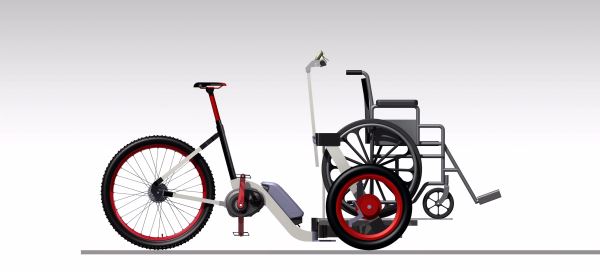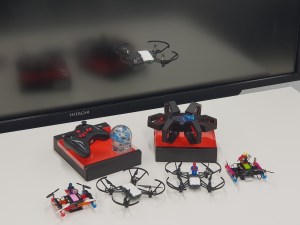A robotic arm controlled by facial expressions, a solar-powered Tuk Tuk set to circumnavigate the globe and 3D printed body implants all made by the next generation of engineers will be on display at EnGenius this week.
The EnGenius tech show, to be held at the Melbourne Convention Centre on Wednesday, brings together the best and brightest engineers.
More than 1,000 final year engineering students will showcase their projects and products at the event.
Industry experts and RMIT academics will judge the exhibits focussing on academic excellence, innovation and potential to have genuine impact.
Executive Dean School of Engineering Professor Adrian Mouritz said RMIT was proud to produce young engineers who were creating design solutions for real-life challenges.
“EnGenius brings engineering out of the classroom and into real life,” Prof Mouritz said.
“Visitors to EnGenius can see how a robotic desk arm could help children with spinal cord injuries gain independence, learn how a bike for people with special needs was designed and developed and drive a drone.”
Prof Mouritz said RMIT was committed to preparing students for life and work.
Creating meaningful partnerships
“By embedding industry in everything we do, we’re able to create meaningful partnerships and close the gap between research and impact to help shape the world,” he said.
“There’s no better example of this than EnGenius. The event gives industry the opportunity to meet its future workforce and students the opportunity to meet employers.”
Industry 4.0 is a key event theme and highlights the impact of digital disruption, such as the Internet of Things and augmented reality (AR), on engineering.
LEAP Australia Regional Technical Manager David Graham said the organisation was pleased that RMIT students who were exhibiting at EnGenius embraced these disruptive trends with a variety of innovative and cutting-edge projects.
“We are closely involved with RMIT EnGenius to help raise awareness of what is possible with these new technologies and to encourage more engineering graduates to develop these much-needed Industry 4.0 skills which are now demanded by our industry customers across Australia and New Zealand,” he said.
Robot that could help those with spinal cord injuries
Electronics and communications engineering and computer science student Peter Kydas is one of the team behind Facegate, a robotic arm controlled by facial expressions and movements that could help children with spinal cord injuries.
“There’s technology out there where electrical stimulation can help a carer in moving a child in and out of a wheelchair. In the future, we see this electrical stimulation being able to control whole limbs. Currently, however, there still needs to be a carer controlling those motions,” he said.
“What makes Facegate different is we are trying to cut out the middle man so the child can have control and gain some independence. Imagine a robotic arm attached to a wheelchair opening doors for them.
“We are very excited to showcase the project, which has been a year in the making.”
Self-driving cars
GM Holden HR Director Matthew Hough said Australian graduates were helping to spearhead future global electric and self-driving cars.
“We can expect to see more change in automotive mobility the next five years than we’ve seen in the past 50. New graduate engineers will play a vital role in bringing creativity and innovation to our journey,” he said.
“We’re here to show them the exciting work we’re doing here and globally for General Motors.”
Earlier this month RMIT announced an Australia-first partnership with global tech education leader Udacity, which will bring Silicon Valley learning on Self-Driving Cars and AI Programming to Australia.


